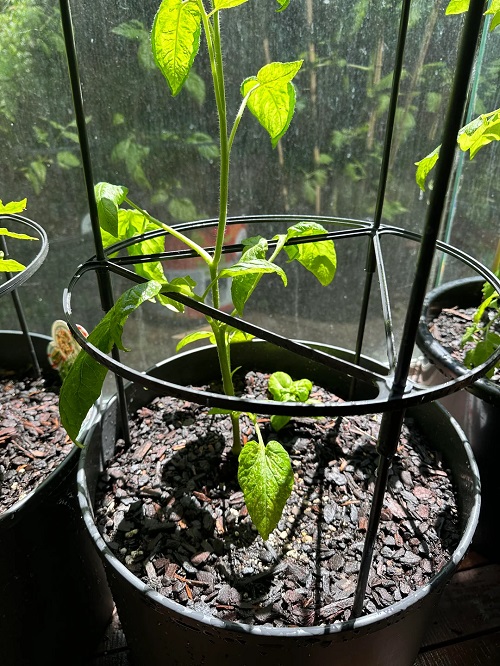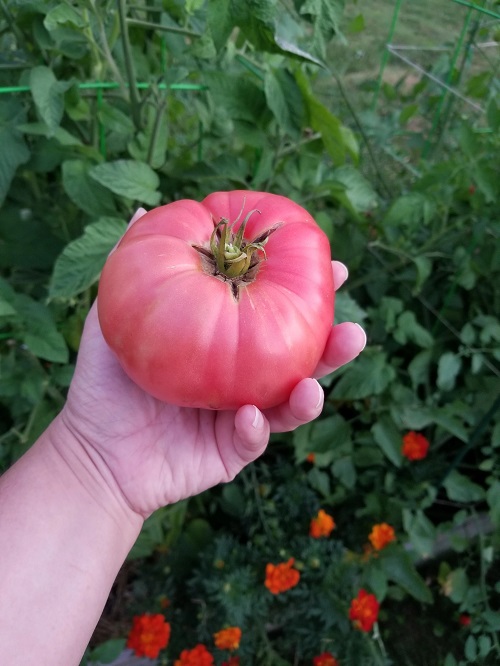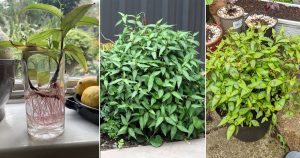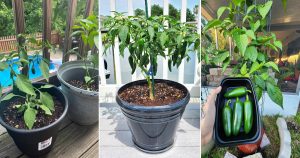Learn all about How to Grow Brandywine Tomatoes and enjoy this tasty variety fresh in sandwiches and salads all year round!
Check out our detailed guide on How to Grow Brandywine Tomato and enjoy one of the tastiest varieties. It’s sweet and juicy, perfect for fresh salads and sandwiches.
Brandywine Tomato Plants
Brandywine tomatoes have a sweet and juicy taste, with tender outer skin. This heirloom tomato cultivar thrives best in USDA Zones 3-9. It has unique foliage and can grow up to 8-9 feet in height. These are also one of the slow-growing tomato varieties that can take up to 80-100 days to bear fruits.
Are Brandywine Tomatoes Determinate or Indeterminate?
These tomatoes come in both determinate and indeterminate varieties, but they are mostly recognized as indeterminates.
Brandywine Tomato Spacing
In order to get the best growth and tomatoes, you must space the plants at least 8 to 36 inches (45 to 90 cm) apart if you are growing them in the garden. For containers, follow the one plant per pot rule.
Best Pot Size for Growing Brandywine Tomato
As these tomatoes are large and need staking, you’ll need to purchase a bigger pot to accommodate their growth. Growing them in small pots will result in small tomatoes. Go for a 16-24 inches pot for best development.
How to Grow Brandywine Tomato

It’ll be a great idea to start the plant indoors 2-3 months before the last frost date in your area.
Growing Brandywine Tomatoes from Seeds
Get good quality seeds from a garden center. Take a 12-16 inches pot, fill it with a well-draining potting mix, sprinkle the seeds onto the soil, and cover them with a thin layer of growing medium. You can also sow seeds directly in the garden.
Keep the soil slightly moist by regular misting. The seeds will germinate in 10-14 days. Once the seedlings are 3-4 inches tall, move the pot to an area that gets maximum sunlight.
Brandywine tomato plant is sensitive towards frost. Avoid planting it outdoors until the last date of frost. It is essential to allow the seedlings to harden off for 7-15 days before you can transplant the containers outdoors. It helps in acclimatizing to the new growing conditions.
Propagation via Cuttings
Tomato cuttings root quickly, too. After you have cut off some suckers, root them in water or plant them in the soil to see how they begin to grow as individual plants in 7-10 days.
Super Tip: Brandywine tomatoes are often grown with basil as a natural companion. Also, it is a great fly repellant.
Growing Requirements for Brandywine Tomato Plants

Location
Brandywine tomato is one of the hungriest when it comes to light exposure. Make sure it gets a minimum of 5-6 hours of direct sun every day. The more sun it gets, the better it will be for fruiting and growth.
Also, ensure there are no shadows cast by the nearby structures or trees where you grow them.
Soil
These tomatoes need well-draining, loamy, and rich soil that allows the roots to grow deep. If the soil is heavy, add plenty of leaf mold, compost, or manure to amend it right,
You can also combine vermiculite, compost, and peat moss in equal quantities to the soil.
Watering
It is essential that you always keep the soil moist to promote healthy and juicy tomatoes. Never let the soil go completely dry, but at the same time, avoid overwatering the plant.
To find the right balance, water when the topsoil feels a little dry to the touch. You can even opt for drip irrigation to prevent airborne diseases such as blight.
Temperature
Brandywine requires a warm climate and a temperature range of 65-90 F or 18-32 C. It is ideal to wait until the night temperatures are at least 55 F or 12 C when growing outdoors.
Brandywine Tomato Care
Fertilizer
It is best to use a 5-10-10 feed, diluted to half of its strength once in 3-4 weeks. You can also use compost tea, seaweed extract, or fish emulsion around the base of plants once every 2 weeks.
Mulching
Mulching is crucial for growing heirloom tomatoes as it helps suppress weeds and retain moisture in the soil. Use straw or shredded leaves for this purpose.
Pruning
Trim off suckers from the plant’s base to channel the energy into producing juicier and bigger fruits. Reduce the fruiting branches to 4-6, and it will keep your plant balanced and produce bigger fruits.
Also, any foliage in contact with the soil should be cut off to reduce blight risk.
Providing Support
To have a successful harvest, it is vital to provide adequate support. Plastic or wooden cages or stakes are best. Do not insert them too deep to avoid harming the roots.
Pests & Diseases
The heirloom tomato is prone to anthracnose, molds, viral pathogens, bacterial pathogens, and septoria leaf spots. Giant green tomato hornworms, slugs, aphids, beet armyworms, and loopers can also be significant causes of concern.
To avoid diseases and pests, space the plants well, allow proper ventilation, and rotate the plant and water only at the base. You can use insecticidal soap if the problem persists.
Harvesting Brandywine Tomatoes

Once the plants are about to reach their peak in terms of color, they are ready to be harvested. Do not leave the fruits hanging for long, as it can encourage cracking.
Preserving Brandywine Tomatoes
These tomatoes last for a shorter period, and the best way to preserve them is by canning or freezing. They also taste sweet when dried for future use in cooking.
What are Brandywine Tomatoes Good For?
As these tomatoes have great taste and color, you can use them in various ways. Use them for canning, pickling, and saucing. However, they taste best only when fresh and have a lower shelf life.
They are also rich in lycopene, a powerful antioxidant. These tomatoes also have a high content of vitamin A, vitamin D, and potassium.










